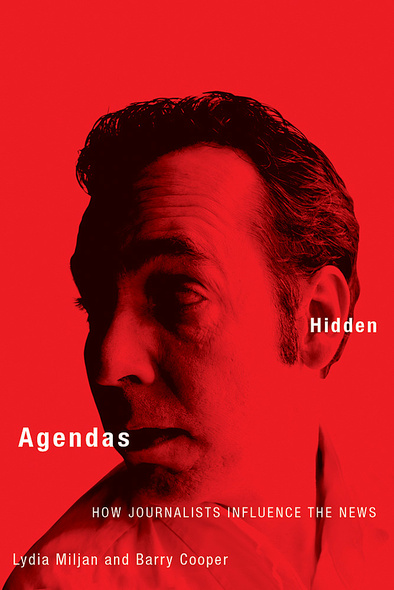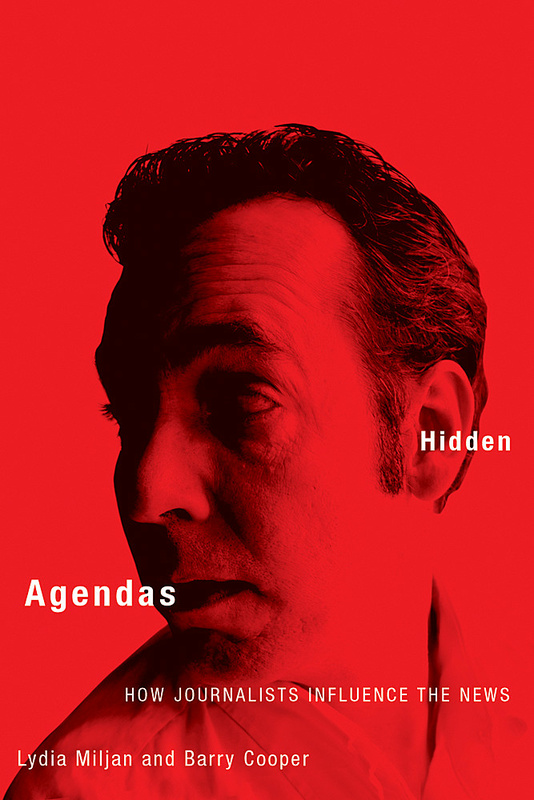
In our news-hungry society, where CNN is considered a staple of primetime viewing, journalists have become celebrities and often, political proxies. To a large degree, our world is shaped by their commentaries on everything from war to health care to trade. Hidden Agendas: How Journalists Influence the News is a no-holds-barred exposé of how the opinions of reporters decidedly shape the information we consider news.
Focusing primarily on the political orientation of journalists, Miljan and Cooper investigate the link between what journalists believe about politics and how they report political issues. Using data gathered from interviews with over 800 Canadians and some 270 journalists, the authors compare how the attitudes of journalists differ from those of the general population, and how the journalists’ opinions influence the daily news. By examining the way they respond to questions on the economy, social issues, and national unity, and comparing these responses with how the stories were reported in Canadian news outlets, the book arrives at the controversial conclusion that journalists, more so than the owners of the media, are the architects of the news, engineering not only its drama, but also its ideological thrust.
A must-read for anyone interested in politics and the media, this book should be read by journalists, politicians, academics, and all Canadians who are concerned about the hidden agendas of journalists.
Awards
- 2004, Shortlisted - Donner Prize, Donner Foundation
Hidden Agendas lays out the pervasive liberal-left bias in most big-city newsrooms. It should be a wake-up call for reporters and editors who believe themselves to be objective, but aren’t.
Hidden Agendas breaks new ground and expands our understanding of Canada’s media. But be forewarned: Whatever your preconceptions about who’s right, who’s left and who’s wrong, this little book is full of surprises.
With care and skill, Miljan and Cooper subject the poisonous debate over media bias to a healthy dose of scientific analysis. All future debate over the media will have to take their research into account. This book shows that bias isn’t just in the eye of the beholder. It’s also in the eyes of journalists, to whom we’re all beholden for our image of reality.
Preface
Part 1: Context
1 Why Journalists?
2 Why the News?
3 Are Journalists Agents of Control or of Change?
Part II: Data
4 Who Staffs Canada’s Media?
5. Climate Change and Content Analysis
Part III: Issues
6 Economic Issues
7 Partition of Quebec
8 The Courts and Social Issues
9 Conclusions




